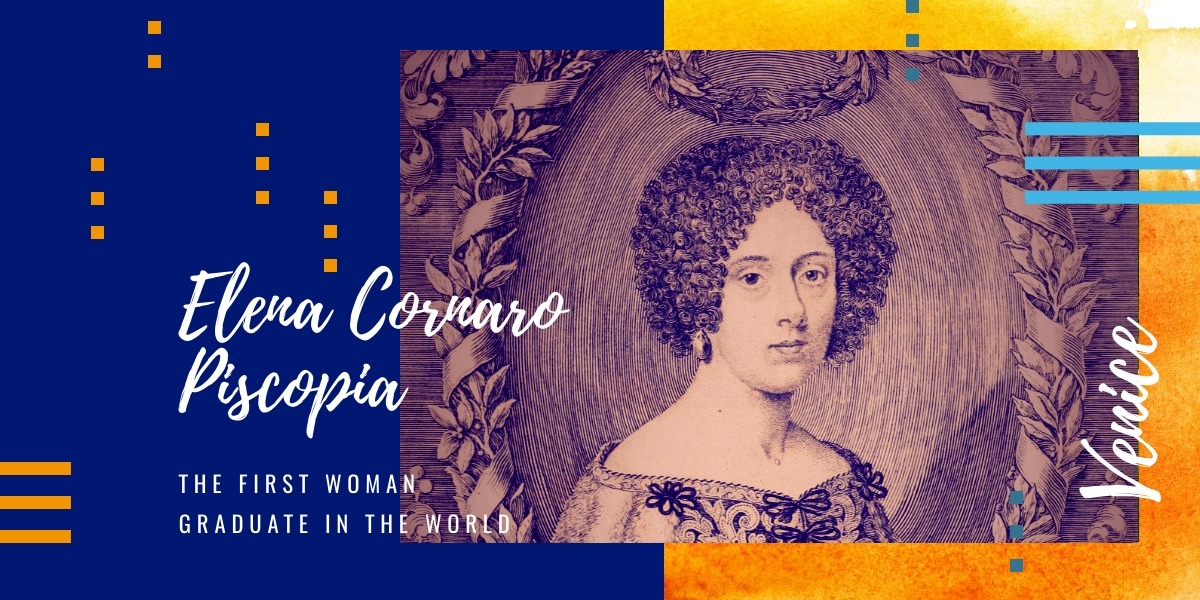Not far from the Rialto Bridge, in Calle del Carbone, there is a plaque in memory of a person less known to most but not less important for the history of Venice and women.
On the occasion of Women’s Day we want to tell you who Lucrezia Corner Piscopia was, the first woman graduated in the world, born in Venice in 1646.
Lucretia’s origins were humble, fifth of seven children of the noble Giovan Battista Corner and the commoner Zanetta Boni. At the age of 18, her father wanted to register her, together with his brothers, in the register of the Venetian nobility by paying the sum of 100,000 ducats.
Who was Elena Cornaro Piscopia? Education
Her father Giovan Battista, aware of Lucrezia’s great gifts, immediately encouraged her to deepen her studies.
He entrusted her preparation to the theologian Giovanni Battista Fabris, to the latinist Giovanni Valier, to the Greek scholar Alvise Gradenigo, to the professor of theology Felice Rotondi and to Rabbi Shemel Aboaf, from whom Lucrezia learned Hebrew.
In addition to these teachings, Lucrezia learned many languages such as Spanish, French, Arabic, Aramaic and also acquired skills in the field of music.
Carlo Rinaldini, former professor of philosophy at the University of Padua, was her mentor and guided her in the study of dialectics and philosophy. Elena Lucrezia soon gained fame in intellectual circles around the world.
Who was Elena Cornaro Piscopia? Graduation
In 1678, after taking part in a philosophical dispute in ancient Latin and Greek in Venice, through Carlo Rinaldini, Elena Lucrezia asked that she be awarded a degree in theology from the University of Padua.
Initially the bishop of Padua opposed the degree and came into conflict with Lucrezia’s father, but eventually, on June 25, 1678, she obtained recognition of her degree in philosophy.
This however will not allow her to teach, being a woman, and almost a century will pass before a woman can graduate.
Who was Elena Cornaro Piscopia? The last days in Padua
After obtaining the prestigious title Elena Lucrezia moved near the Basilica of Saint Anthony, in Palazzo Cornaro. Her weak constitution combined with the frenzied study led her to die at the age of 38. Her remains are now preserved in the church of Santa Giustina in Padua.
In addition to the lapidary plaque in Calle del Carbone, Elena Lucrezia is remembered with a statue in the Palazzo del Bo in Padua and one of the craters of Venus is dedicated to her. She is also depicted in the library of Vassar College in Poughkeepsie.
Are you planning your holidays in Venice?
Find out how to get comfortably by bus, VISIT THIS SITE.
Continue reading our blog to discover everything about Venice and its surroundings




